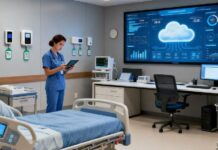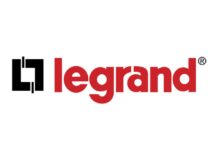The implementation of electronic medical records (EMRs) in healthcare practices will enhance the efficiency of hospital systems and reduce the chances of errors in medical offices. The need to contain healthcare costs and improve the quality of healthcare services is adding impetus to market advancement.
Analysis from Frost & Sullivan's(http://www.technicalinsights.frost.com) Electronic Medical Records-Technology Trends and Stakeholder Assessment research finds that although large healthcare practices prefer client-server based EMR systems, web-based EMR solutions are gaining popularity with small-sized healthcare practices and private physician offices.
If you are interested in more information on this research, please send an email to Britni Myers, Corporate Communications, at britni.myers@frost.com, with your full name, company name, job title, telephone number, company email address, company website, city, state and country.
"EMRs are poised to improve patient care, reduce healthcare expenses and fundamentally change the way in which medicine is practiced," said Technical Insights Senior Research Analyst Darshana De. "Government incentives are expected to increase the effective implementation of health IT adoption; the most significant drivers include the United States' American Recovery and Reinvestment Act of 2009 (ARRA) and Australia's $450 million e-health effort."
Additionally, emerging markets such as Malaysia, Thailand, Russia and China are expected to rapidly adopt EMRs. The future of these markets will depend on the support given by their governments, as well as the regulatory standards adopted.
Cloud-computing solutions in the EMR space show a great deal of promise to reduce costs and increase efficiency. However, they are also likely to prove much more expensive than standard, client-server EMR solutions due to recurring access costs.
Nearly 5,800 U.S. hospitals are using EMRs, with adoption rates beginning to accelerate due to ARRA incentives and penalties. However, very thin (or even negative) margins are making it a challenge for hospitals to set aside funds for EMR-related projects.
In ambulatory settings, most physicians have implemented EMRs with sophisticated functionality and shared clinical data across multiple offices. Many hospitals in the United Kingdom are starting EMR implementation.
"A key challenge going forward is the expense to implement and support EMR systems," said Technical Insights Research Analyst Arjunvasan Ambigapathy. "A major task for healthcare practices that still have not begun the implementation process is to find suitable vendors who can help streamline the entire process."
From a technical standpoint, an important objective is to customize the configuration of EMRs under a hybrid model that involves control over patient data under a client-server system with options for maintenance, back-up, security and disaster recovery outsourced to the data center.
"Such a model will enable providers to have their own customized EMR system," said Ambigapathy. "It will allow for a reduction in IT costs as well as greater control over patient data, while minimizing risk by relying on only one third-party."
Electronic Medical Records-Technology Trends and Stakeholder Assessment is part of the Technical Insights subscription, which also includes research in the following markets: Top Medical Device and Imaging Technologies, Biosimilars—Technology Market Penetration and Road Mapping, and Trends in Automated Microbiology. This research service includes detailed technology analysis and industry trends evaluated following extensive interviews with market participants.
Technical Insights is an international technology analysis business that produces a variety of technical news alerts, newsletters and research services.














